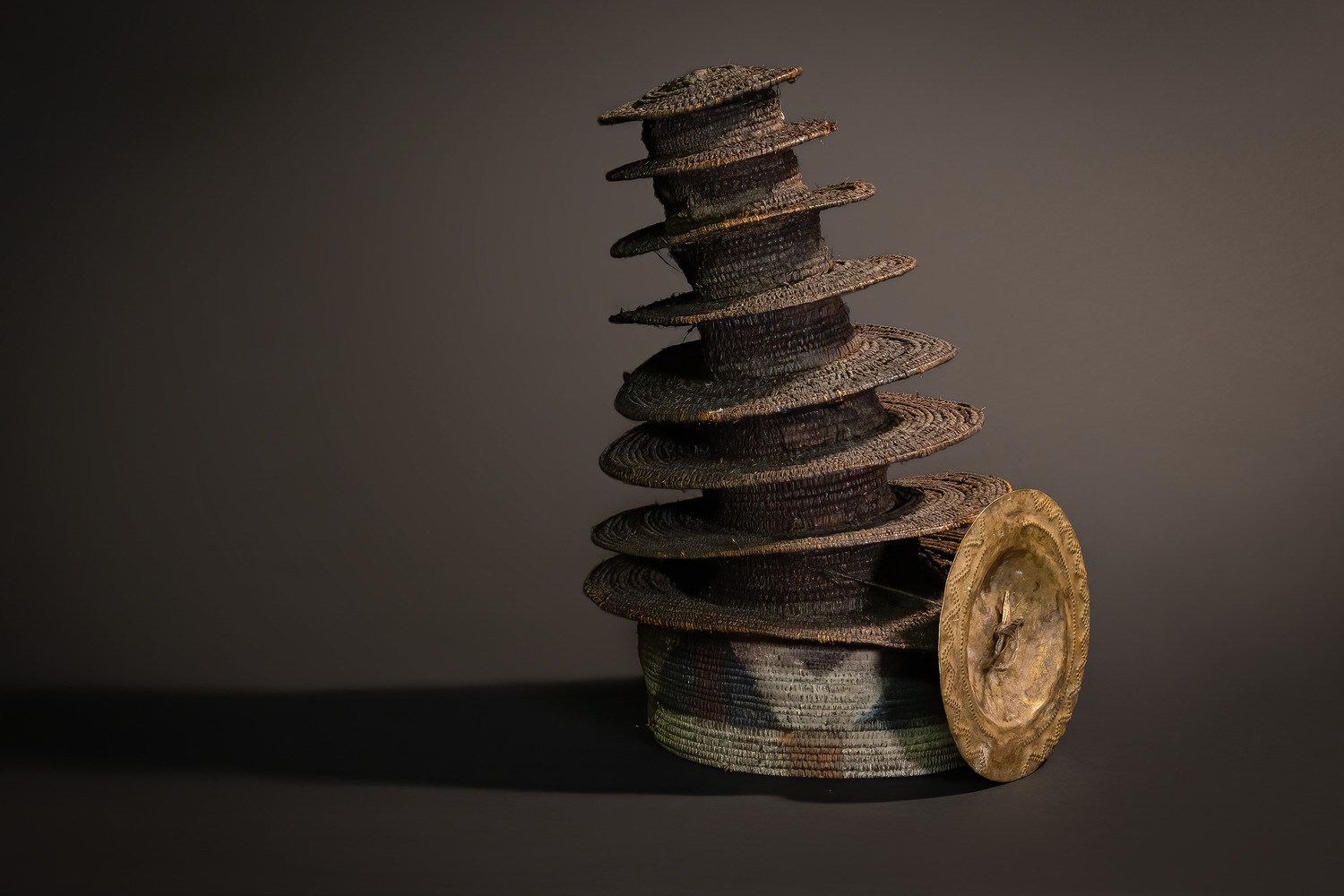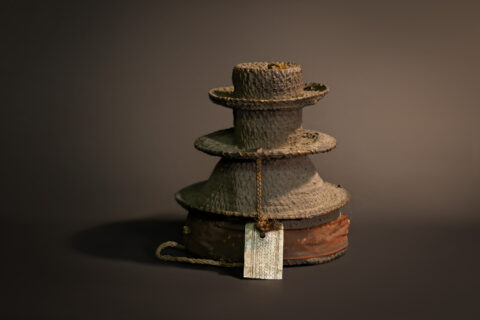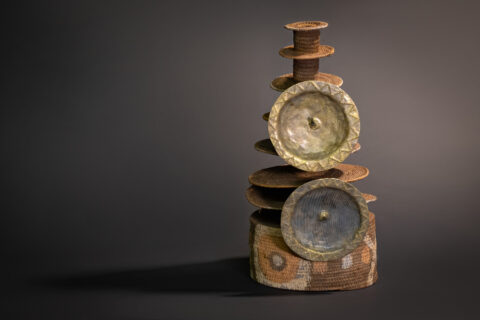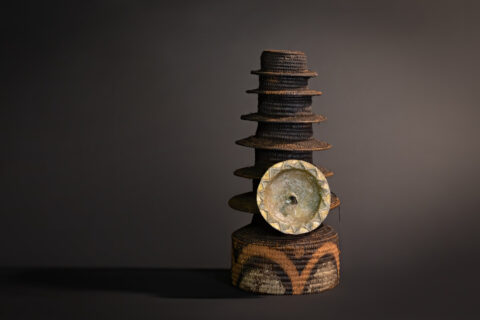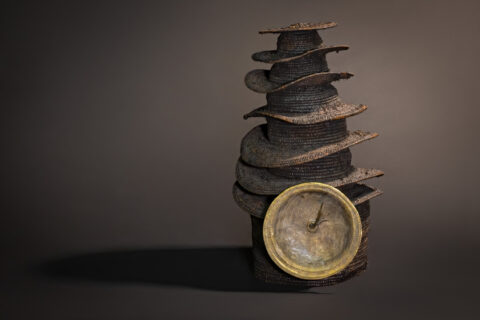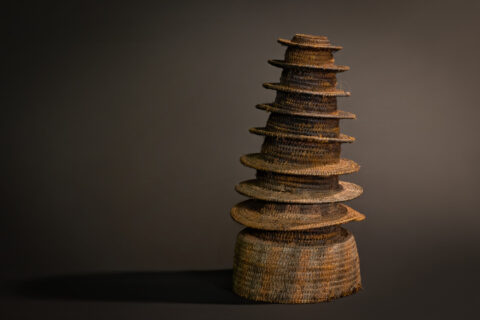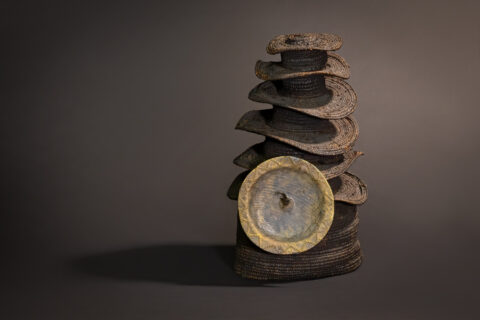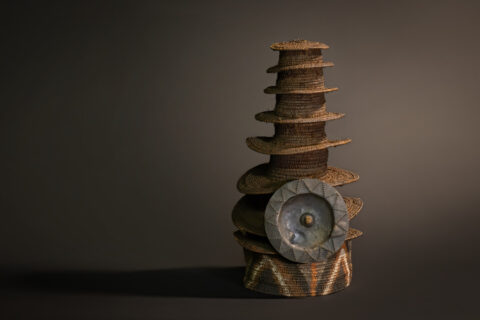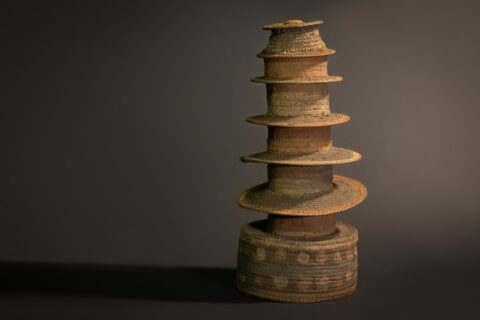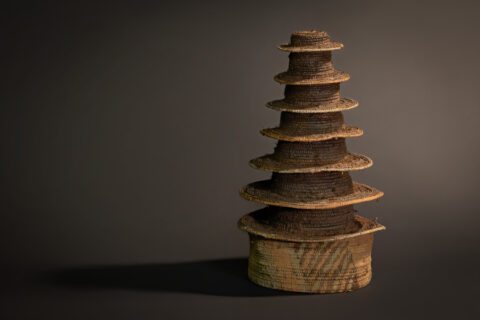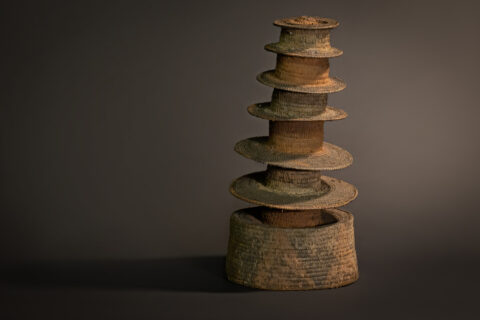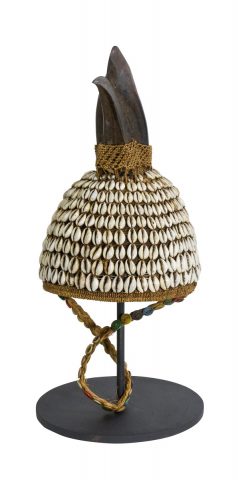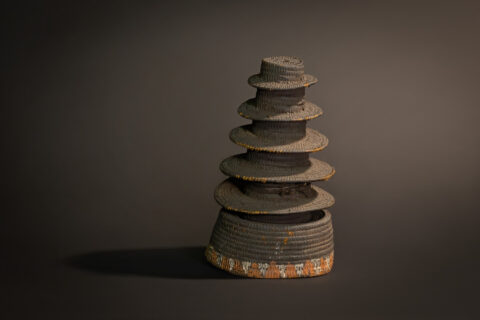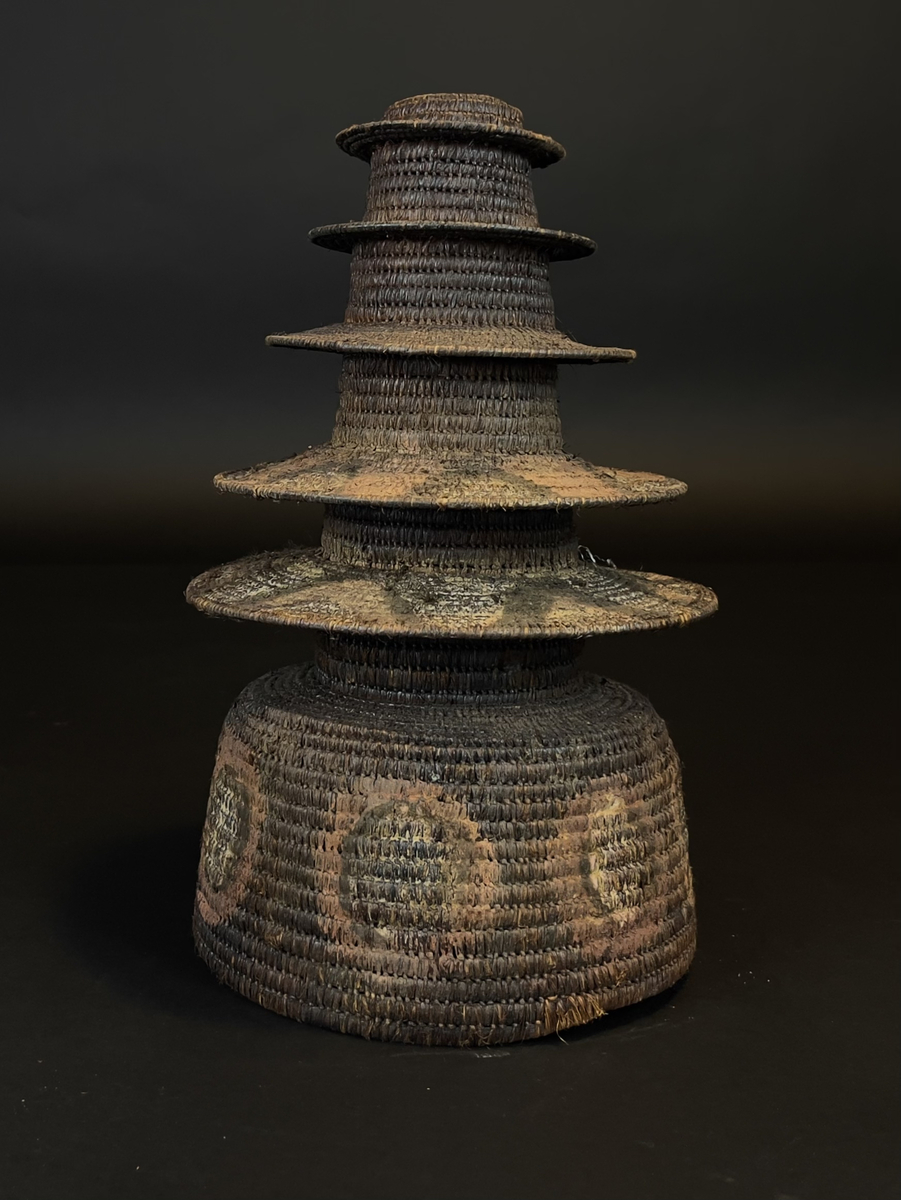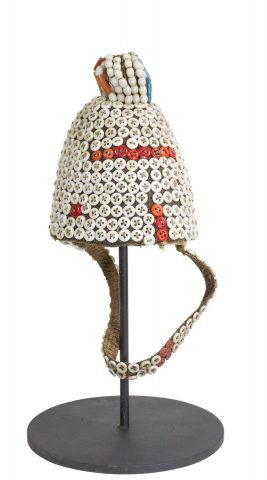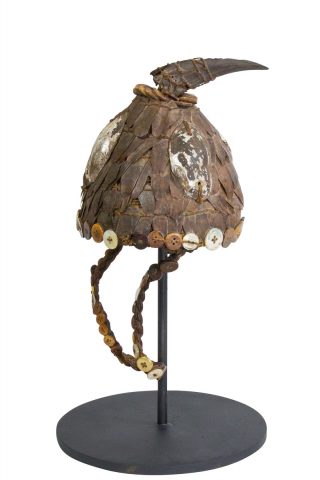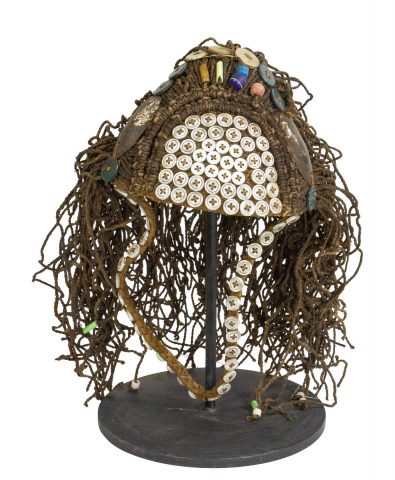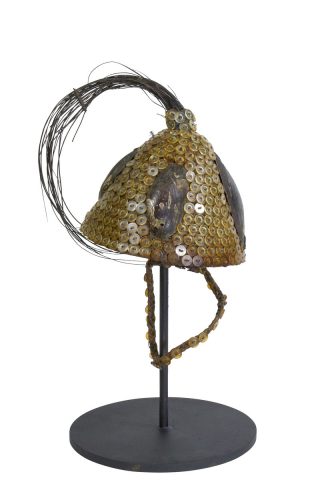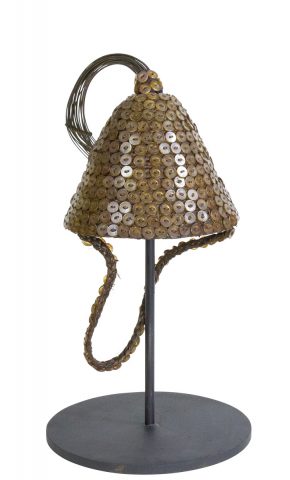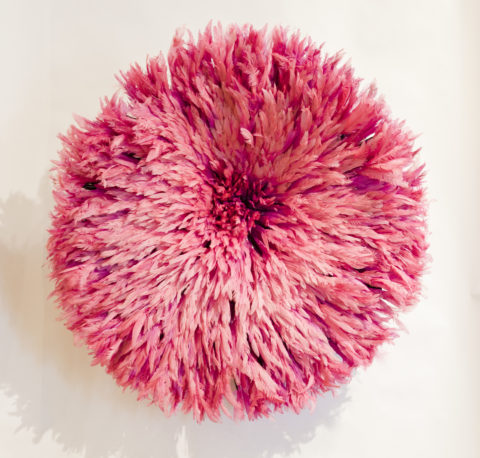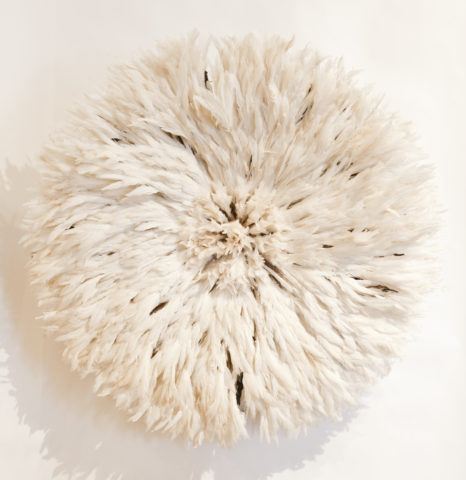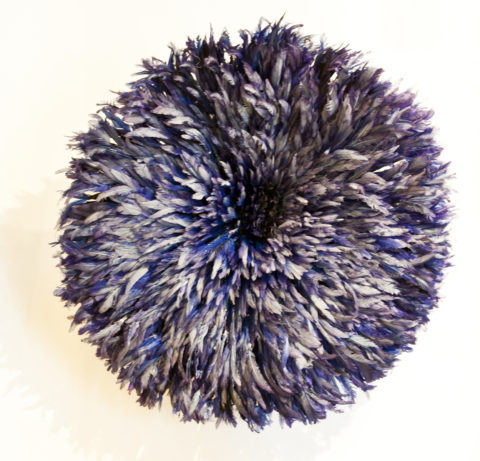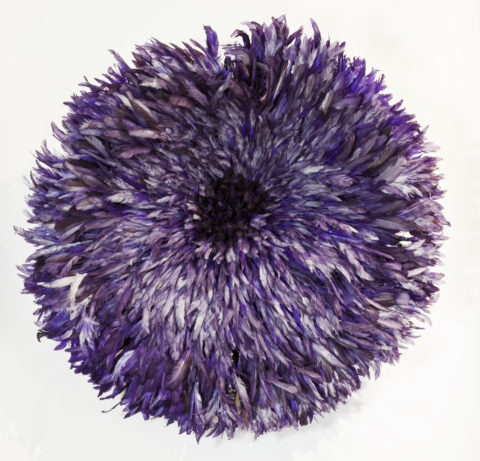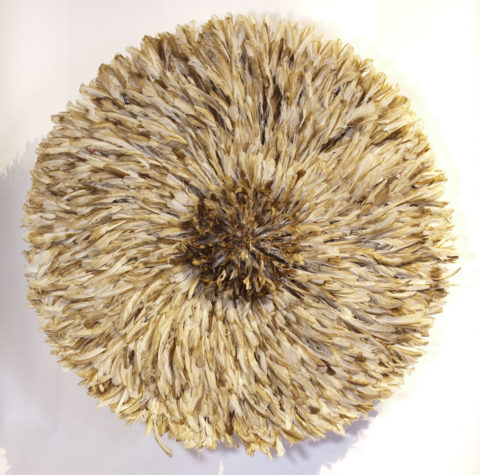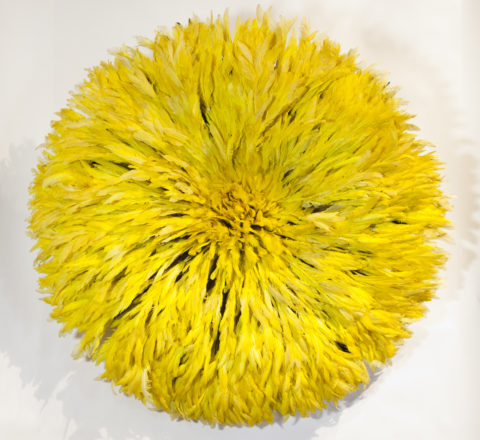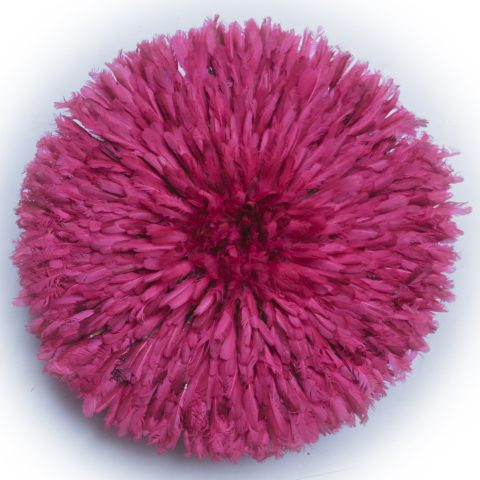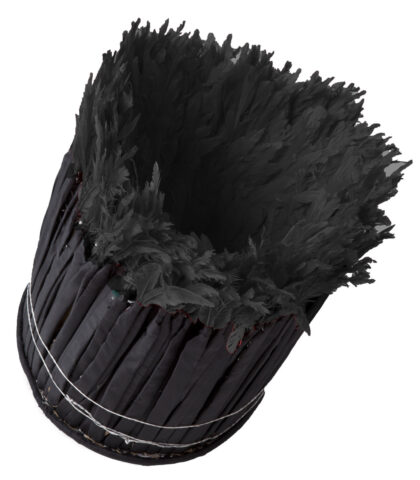Description
This Botolo hat, collected in Kinshasa in the early 1970s from a young prince of the Ekonda nobility, is among the most visually rhythmic and symbolically elevated in the corpus of central African regalia. Its tightly staggered, upward-scaling brims recall the ascending orbits of a cosmic diagram, culminating in a refined ceremonial apex. At its foundation lies a soft-hued woven base, dyed in pale indigo, clay-red, and ivory tones, which subtly mimics lunar and planetary forms—a motif likely referencing ancestral cosmologies tied to fertility and seasonality.
The frontal brass medallion, marked by its crisply etched chevron border and sunken central spine, reinforces its role as a visual beacon of status and wealth. This headdress likely served as an emblem of high ritual standing, possibly reserved for events invoking ancestral mediation or celestial alignment, as suggested by its symmetrical composition and dyed tonal range.
In The Power of Headdresses (Biebuyck & Van den Abbeele, 1984), the authors note that the Ekonda worldview connects status symbols like the Botolo hat to an invisible chain of spiritual legitimacy. This piece’s deeply contoured brims and bold silhouette conjure that connection, its sculptural momentum lending authority to its presence both in ritual and in contemporary curatorial settings.
Its preservation, complete with natural smoke patina and minor structural fraying, signals respectful ritual use and inheritance—a key practice among Ekonda elites who passed such pieces through dynastic lines.


